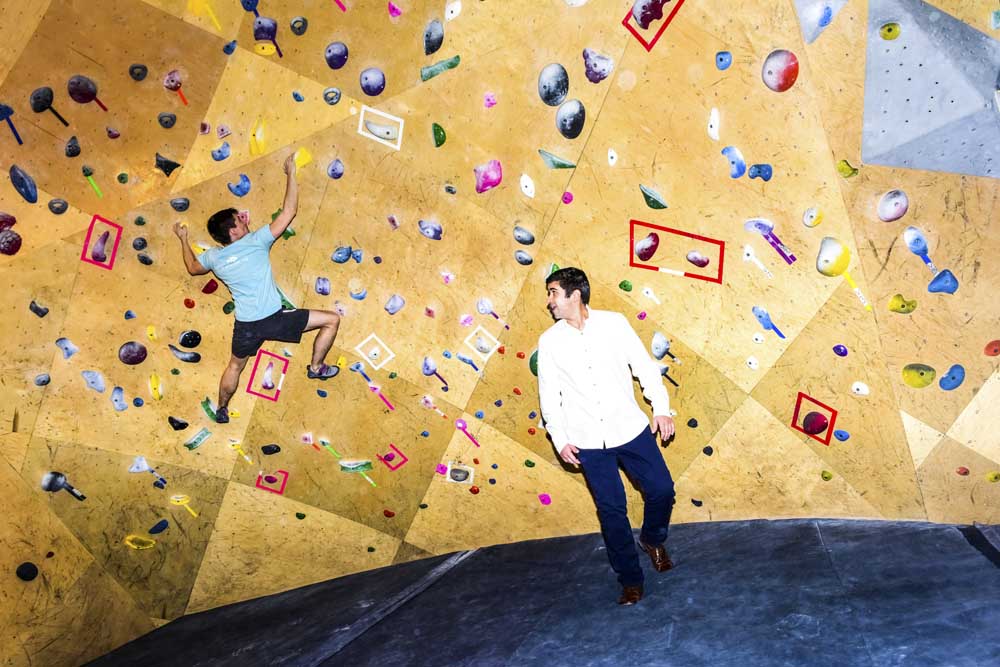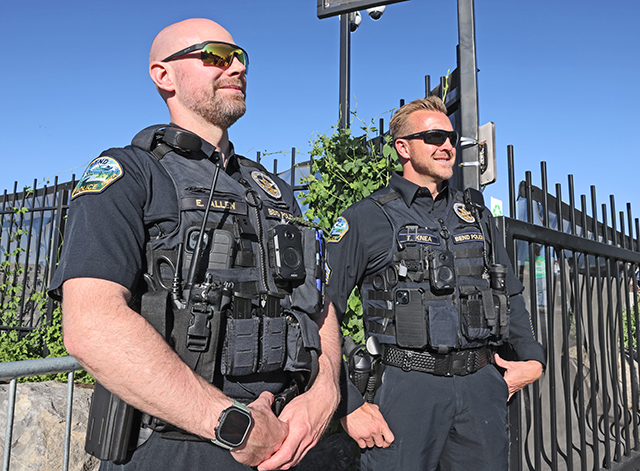Climbing gym owners must scale wall of epic expenses
Published 5:47 am Saturday, March 18, 2017

- Lance Pinn, founder of Brooklyn Boulders, watches a climber at the gym’s Long Island City location in New York. More entrepreneurs are bringing their enthusiasm for climbing indoors: Gyms are sprouting across the country with walls for climbing and bouldering. (Dolly Faibyshev/The New York Times)
NEW YORK — “Right foot. You’ve got to put your right foot on the pink hold.” So a young woman coached a friend who was trying to scale a 30-foot wall at the Brooklyn Boulders outpost in Long Island City, Queens, on a recent Saturday morning.
“There you go, guy,” called another member of the group. “You’re almost there. You got it, bro.”
Well, not quite. He lost his footing, dropped to a padded surface, grinned ruefully and prepared to try again. Elsewhere in the 25,000-square-foot space, a father watched his son and daughter clamber partway up a 19-foot wall, and a fitness instructor led a class that was heavy on push-ups.
Once a niche sport, indoor rock climbing is becoming more and more mainstream, thanks in part to facilities like Brooklyn Boulders, which also has gyms in Chicago and Somerville, Massachusetts. Plans for other locations are on the drawing board, the company’s president, Lance Pinn, said.
There were 414 commercial climbing gyms across the country at the end of 2016, up from 388 in 2015, according to data from Climbing Business Journal, a website dedicated to the indoor climbing industry. Most major cities now have at least one. And climbing will be part of the 2020 Olympics.
But the 16 percent growth that Climbing Business Journal anticipated in 2016 was overly optimistic; expansion did not quite hit 7 percent. Would-be owners have a tough climb of their own: finding and financing real estate with the right dimensions, never mind the high cost of building a wall (no, not that kind of wall).
Another challenge: How do you get people to sign up for an activity that many view as difficult, if not downright dangerous?
On that Saturday at Brooklyn Boulders, a staff member gave an orientation tour to half a dozen first-timers, most of them millennials. She pointed out the cardio room, the yoga studio, the co-working spaces and the walls pocked with molded-plastic grips in many shapes and colors.
Pinn, 32, and two former classmates from Babson College in Wellesley, Massachusetts, were inspired to establish a rock-climbing gym in New York City in 2008 when they were put off by the high costs and limited options around town.
They ended up opening for business in 2009 in a garage in Brooklyn formerly owned by The Daily News. It had a pop-up roof (ideal for their purposes) and 18,000 square feet of space. Success came quickly, as did the decision to expand the gym’s offerings to include yoga, Pilates, fitness classes and exercise machines. A day pass is $32; a monthly membership is $135.
Brooklyn Boulders has an average of 1,000 visitors a day in each of its locations, Pinn said.
But building a climbing gym is an enormous undertaking. Thomas Betterton, 33, the majority owner of the Denver Bouldering Club, recalled the reluctance of landlords when, in 2009, he opened the first of his two locations.
“It was hard to get anyone to take us on as tenants, because they didn’t know what a bouldering business was,” he said. “And trying to get a small business loan was an uphill battle, because this is a nontraditional business.”
It is an expensive one, too. “You’re talking millions of dollars for the walls — there’s a lot of engineering,” said Kevin Goradia, 26, the owner of Crux Climbing Center, a nine-month-old, 22,000-square-foot gym in Austin, Texas.
Pinn has backing from the private equity firm North Castle Partners. “When we were raising money for the first two facilities, we would hear: ‘Climbing is a fad. It’s going to go out of style,’” he said. “But climbing facilities have been a constant in the U.S. since 1987, and maybe before that.”
Owners of rock-climbing facilities are selling a lifestyle as much as a physical challenge, a community as much as a gym, social climbing as much as rock climbing.
“People come for the climbing, but also to be with friends,” said Taki Miyamoto, 39, an owner and the general manager of Salt Pump Climbing in Scarborough, Maine. “You can only climb so much, so the atmosphere is important.”






